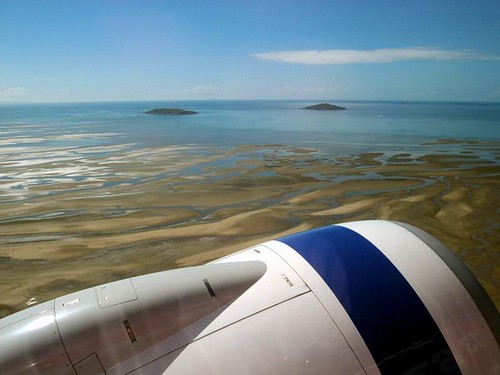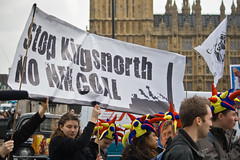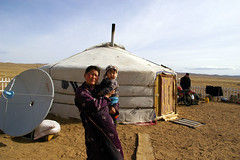 Going slow
Going slow:
Why is renewable energy becoming energised so slowly in 'backward' countries like the Great Britain which is where I live? Why has it taken off in Germany? Both countries have similar climates: lots of grey skies and wind. In fact, Britain has more wind and a vast resource, as yet untouched, of wave and tide power which Germany with its limited coastline does not possess. And yet Germany is streets ahead on producing energy from renewables, principally photovoltaics. Renewable energy made up more than 14 percent of Germany's power consumption in 2007, up from almost 12 percent in 2006, with wind as the main contributor (source:
The Guardian). Why Germany?
Becoming energised: It seems it's all down the German government's
intelligent foresight. The government guarantees a market for solar power by operating a system of feed-in tariffs. There, as explained in a New Scientist article (
Solar power: The future's bright, 8 December 2007), anyone who produces electricity from solar power can sell it to the national grid for between Euros 0.45 and Euros 0.57 per kilowatt-hour, which is almost three times what consumers pay for their electricity, roughly Euros 0.19 per kilowatt-hour.
And the result? Today there are over 300,000 photovoltaic (PV) systems in Germany, mostly on the rooftops of homes and small businesses, and Germany is the world's fastest-growing PV market. It has 55 per cent of the world's installed base of PV panels and can generate around 3 gigawatts of electricity from solar energy, equivalent to between three and five conventional power stations
(ibid, New Scientist)
. All from a country which passes much of its time under grey cloud like Britain.
The windiest European country lags badly: Great Britain could have done this for wind energy -- PV too since the amounts of solar energy received by Britain and Germany are fairly similar. It could have done it for waves and tide power but instead, it relied of cheap oil and gas from the North Sea, coal and the massively-subsidised nuclear industry.
It needn't be like this: A smart British government would follow Germany's lead -- now actively being pursued by Italy and Spain for PV -- and California is, as usual, leading the way in the USA with major subsidies for new PV installations. Britain is well placed to energise its wind power generation together with developing emerging technologies for storing the energy produced by using
compressed air energy storage (CAES), perhaps utilising the vast underground caverns left by salt-mining in central-west parts of England. At present, the British government offers a
derisory grant and rumour has it that even this is to be axed. So there is little incentive for someone like me to invest in a wind turbine on my windy north-west Wales farm.
NIMBY and turbulence: Quite apart from the requirement for planning consent for stand-alone turbines, there is the problem of those people who object to 'spoilt views' (it seems the numerous power pylons are okay bringing energy from a far-off polluting coal power station which is not, of course, in their back yard!) and who complain of 'possible noise' (aircraft? helicopter? cars? lorries? All okay, it seems). That is quite sufficient for a local council to reject an application for a turbine.
Turbulence is another issue and can be a serious problem around buildings and in urban areas -- which makes the new 'bolt on your wall'-type turbines a bad buy. But what about farms? Fields are open; turbines are free-standing: it's not difficult to find space on any farm of my size (5 hectares) or bigger. Farms are already host to eyesores like huge barns, stacks of silage, slurry tanks and grain silos, all acceptable to the planners. The view is already compromised.
Decentralised power stations: So imagine if every farm had a turbine or two? There are several first class turbines (like the range offered by
Proven, as featured in my picture) which are tailor-made for farm use. In fact, Proven are attempting to start a new way of producing wind energy called
wind crofting. There are tens of thousands of farms in windy Britain. Every farm, linked into the grid, could be electric energy-independent as well as feeding surplus power into the national grid. The wind is almost always blowing somewhere. (As I write, it's blowing a severe gale here!)
Could be? Should be and would be if there was a scheme for feed-in tariffs like Germany's. I'd be one of the first to join! Come on, British government: get your act together and stop approving coal-fired power stations on the
flimsiest of pretexts (Carbon Capture and Storage -- CCS -- might perhaps someday become a reality) and tap into this massive resource of power available now, pollution-free with no decommissioning costs...
If the practical side of renewable energy interests you, keep an (RSS feed) eye on my Mur Crusto eco-farm blog because my wife and I are agreed that, notwithstanding all the difficulties and lack of assistance available, we shall try and install a 6kW Proven turbine this year. As the project proceeds, I'll be posting...
 And the planet is very sick. It needs a big dose of Franklin D Roosevelt and John Maynard Keynes' medicine to make a change actually happen. So will people who are in a position to do something open their minds to the realities of impending biosphere collapse and the notion that there could be viable alternatives to rampant consumerist capitalism? President-Elect Barack Obama could be the catalyst but the pessimist in me says that inertia, denial, greed and fear of change will ensure the TNT approach will win out. I earnestly hope I'm wrong.
And the planet is very sick. It needs a big dose of Franklin D Roosevelt and John Maynard Keynes' medicine to make a change actually happen. So will people who are in a position to do something open their minds to the realities of impending biosphere collapse and the notion that there could be viable alternatives to rampant consumerist capitalism? President-Elect Barack Obama could be the catalyst but the pessimist in me says that inertia, denial, greed and fear of change will ensure the TNT approach will win out. I earnestly hope I'm wrong.

 more carbon emissions to the atmosphere was like chucking fuel on the fire of global warming. You can see that authorising more emissions would be guaranteeing life-threatening problems for next generation; our children. So you wouldn't then go ahead and approve a whole new set of electricity-generating plants based on burning that most polluting of fuels, coal, would you? Well actually, yes you would. For that is what many governments are either doing or are about to do. NASA climate
more carbon emissions to the atmosphere was like chucking fuel on the fire of global warming. You can see that authorising more emissions would be guaranteeing life-threatening problems for next generation; our children. So you wouldn't then go ahead and approve a whole new set of electricity-generating plants based on burning that most polluting of fuels, coal, would you? Well actually, yes you would. For that is what many governments are either doing or are about to do. NASA climate








